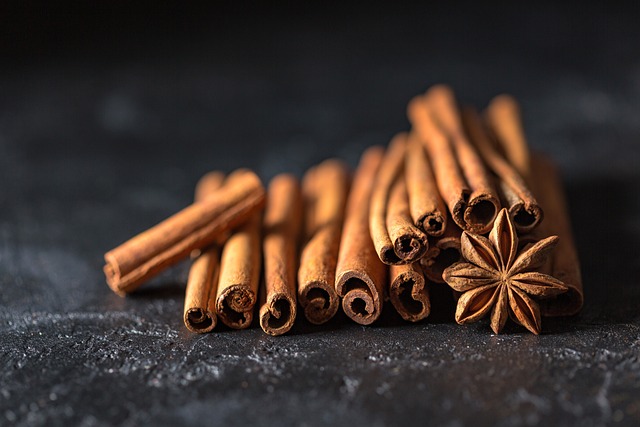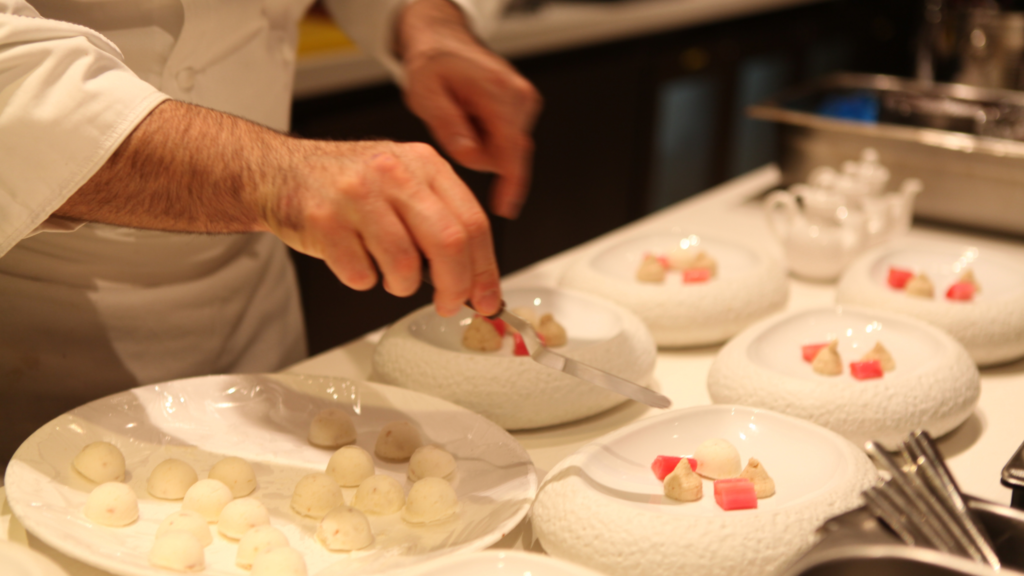-
Table of Contents
- The History and Origins of Haitian Bouillon
- Traditional Ingredients Used in Haitian Bouillon
- Exploring Different Variations of Haitian Bouillon
- A Step-by-Step Guide to Making Authentic Haitian Bouillon
- Health Benefits of Haitian Bouillon Ingredients
- Pairing Haitian Bouillon with Traditional Side Dishes
- Exploring Regional Differences in Haitian Bouillon Recipes
- Vegan and Vegetarian Options for Haitian Bouillon
- Haitian Bouillon: A Symbol of Haitian Culture and Identity
- Q&A
Uncover the rich and vibrant taste of Haitian Bouillon.
Introduction:
Haitian bouillon is a traditional and flavorful dish that holds a special place in Haitian cuisine. This hearty soup-like dish is a staple in Haitian households and is often enjoyed during special occasions and gatherings. Exploring the flavors of Haitian bouillon allows us to delve into the rich culinary heritage of Haiti, where a unique blend of African, French, and indigenous influences come together to create a truly delicious and satisfying meal. Join us as we uncover the ingredients, preparation methods, and distinct flavors that make Haitian bouillon a beloved and cherished dish.
The History and Origins of Haitian Bouillon
Haitian cuisine is known for its bold and vibrant flavors, and one dish that perfectly embodies this is Haitian bouillon. Bouillon is a traditional Haitian soup that is packed with a variety of ingredients and spices, resulting in a rich and flavorful broth. To truly appreciate this delicious dish, it is important to understand its history and origins.
The history of Haitian bouillon can be traced back to the time of the Haitian Revolution in the late 18th century. During this period, enslaved Africans revolted against their French colonizers and established the first independent black republic in the Americas. As a result of this revolution, Haitian cuisine emerged as a fusion of African, French, and indigenous Taino influences.
Bouillon, which means “broth” in French, was originally a simple soup made with whatever ingredients were available. It was a way for the enslaved Africans to make use of the scraps and leftovers they had access to. Over time, as Haiti gained its independence and its culinary traditions evolved, bouillon became a more complex and flavorful dish.
The key to the rich and robust flavors of Haitian bouillon lies in its ingredients. The base of the soup is typically made with a combination of meat, such as beef, goat, or chicken, and a variety of vegetables, including carrots, cabbage, potatoes, and plantains. These ingredients are simmered together for hours, allowing the flavors to meld and develop.
What sets Haitian bouillon apart from other soups is the use of spices and herbs. The most common spices used in bouillon include thyme, parsley, garlic, and cloves. These spices add depth and complexity to the broth, giving it a distinct Haitian flavor. Scotch bonnet peppers, known for their fiery heat, are also often added to bouillon to give it a spicy kick.
In addition to the meat and vegetables, bouillon often includes dumplings or pasta, such as vermicelli or macaroni. These additions not only add texture to the soup but also make it more filling and satisfying. Bouillon is typically served with a side of rice, which helps to soak up the flavorful broth.
Today, bouillon is a beloved dish in Haiti and is often enjoyed during special occasions and celebrations. It is a dish that brings people together, as it is often prepared in large quantities and shared with family and friends. It is a symbol of Haitian culture and heritage, representing the resilience and creativity of the Haitian people.
In conclusion, Haitian bouillon is a delicious and flavorful soup that has a rich history and cultural significance. Its origins can be traced back to the time of the Haitian Revolution, and it has evolved over the years to become a staple in Haitian cuisine. The combination of meat, vegetables, spices, and herbs creates a broth that is both comforting and satisfying. Whether enjoyed on a special occasion or as a comforting meal on a cold day, Haitian bouillon is a dish that is sure to delight the taste buds and leave a lasting impression.
Traditional Ingredients Used in Haitian Bouillon
Haitian cuisine is known for its bold and vibrant flavors, and one dish that truly embodies this is Haitian bouillon. Bouillon is a traditional Haitian soup that is packed with a variety of ingredients, each adding its own unique flavor to the dish. In this section, we will explore the traditional ingredients used in Haitian bouillon and how they contribute to its rich and complex taste.
One of the key ingredients in Haitian bouillon is meat. Typically, beef, goat, or chicken is used as the base for the soup. The meat is usually simmered for hours, allowing it to become tender and infuse the broth with its savory flavors. The choice of meat can vary depending on personal preference, but each adds its own distinct taste to the bouillon.
In addition to meat, vegetables play a crucial role in Haitian bouillon. Common vegetables used include carrots, cabbage, potatoes, and plantains. These vegetables not only add texture to the soup but also contribute their own unique flavors. Carrots provide a subtle sweetness, while cabbage adds a slight bitterness. Potatoes and plantains add a hearty and starchy element to the dish, making it more filling and satisfying.
To enhance the flavors of the bouillon, a variety of herbs and spices are used. One of the most important herbs is epis, a blend of garlic, onions, peppers, and other aromatic ingredients. Epis is used as a base for many Haitian dishes and adds a depth of flavor to the bouillon. Other common spices include thyme, parsley, and cloves, which add a fragrant and earthy taste to the soup.
To give the bouillon its signature tangy flavor, sour oranges or lime juice are often added. The acidity from these citrus fruits helps to balance out the richness of the meat and adds a refreshing element to the dish. The sourness also helps to cut through the heaviness of the soup, making it more enjoyable to eat.
Finally, no Haitian bouillon would be complete without the addition of pikliz. Pikliz is a spicy pickled cabbage and vegetable relish that is served alongside the soup. It adds a fiery kick to the dish and provides a contrast to the rich and savory flavors of the bouillon. The combination of the spicy pikliz and the flavorful broth creates a harmonious balance of tastes that is truly unique to Haitian cuisine.
In conclusion, Haitian bouillon is a dish that showcases the diverse and vibrant flavors of Haitian cuisine. The traditional ingredients used, such as meat, vegetables, herbs, and spices, all contribute to the rich and complex taste of the soup. The addition of sour oranges or lime juice adds a tangy element, while pikliz provides a spicy kick. Each ingredient plays a crucial role in creating a harmonious balance of flavors that is both satisfying and delicious. Whether you are a fan of bold and spicy dishes or simply want to explore the flavors of Haitian cuisine, Haitian bouillon is a must-try dish that will leave you wanting more.
Exploring Different Variations of Haitian Bouillon
Exploring the Flavors of Haitian Bouillon
Haitian cuisine is known for its bold and vibrant flavors, and one dish that truly embodies this is Haitian bouillon. Bouillon is a traditional Haitian soup that is packed with a variety of ingredients and spices, resulting in a rich and flavorful broth. In this article, we will be exploring the different variations of Haitian bouillon, each with its own unique combination of flavors.
One popular variation of Haitian bouillon is the beef bouillon. This version typically includes chunks of beef, vegetables such as carrots, potatoes, and cabbage, and a medley of spices including thyme, cloves, and garlic. The beef is slow-cooked to perfection, allowing the flavors to meld together and create a hearty and satisfying soup. The addition of vegetables adds a touch of freshness and texture to the dish, making it a well-rounded meal.
Another variation of Haitian bouillon is the chicken bouillon. This version features tender pieces of chicken, along with vegetables like bell peppers, onions, and celery. The broth is infused with spices such as parsley, bay leaves, and scotch bonnet peppers, giving it a slightly spicy kick. The chicken bouillon is often served with rice or bread, making it a filling and comforting meal.
For seafood lovers, there is also a delicious variation of Haitian bouillon that incorporates a variety of seafood. This version typically includes fish, shrimp, crab, and sometimes even lobster. The seafood is cooked in a flavorful broth that is seasoned with spices like thyme, cloves, and garlic. The addition of vegetables such as bell peppers and onions adds a burst of freshness to the dish. The seafood bouillon is often served with rice or plantains, making it a delightful and indulgent meal.
In addition to these variations, there are also vegetarian options available for those who prefer a meat-free bouillon. These versions typically include a variety of vegetables such as carrots, potatoes, cabbage, and eggplant. The broth is seasoned with spices like thyme, cloves, and garlic, giving it a robust and savory flavor. The vegetarian bouillon is often served with rice or bread, making it a satisfying and nutritious meal.
No matter which variation of Haitian bouillon you choose, one thing is for certain – you will be treated to a burst of flavors that will tantalize your taste buds. The combination of spices, meats or seafood, and vegetables creates a harmonious blend that is both comforting and satisfying. Each spoonful of bouillon is like a taste of Haiti, transporting you to the vibrant streets and bustling markets of this beautiful Caribbean country.
In conclusion, Haitian bouillon is a dish that truly captures the essence of Haitian cuisine. With its bold and vibrant flavors, it is a culinary experience that should not be missed. Whether you prefer beef, chicken, seafood, or vegetarian options, there is a variation of bouillon that will suit your taste. So, why not embark on a culinary adventure and explore the flavors of Haitian bouillon? Your taste buds will thank you.
A Step-by-Step Guide to Making Authentic Haitian Bouillon

Exploring the Flavors of Haitian Bouillon
Haitian cuisine is known for its bold and vibrant flavors, and one dish that truly embodies this is Haitian bouillon. Bouillon is a traditional Haitian soup that is packed with a variety of ingredients and spices, resulting in a rich and flavorful broth. If you’re looking to experience the authentic taste of Haiti, making your own Haitian bouillon is a must. In this step-by-step guide, we will walk you through the process of creating this delicious dish.
To start, gather all the necessary ingredients. The base of Haitian bouillon is typically made with a combination of meats such as beef, pork, and chicken. You will also need a variety of vegetables, including carrots, potatoes, cabbage, and plantains. Additionally, gather spices such as thyme, cloves, and garlic, as well as bouillon cubes for added flavor.
Begin by preparing the meats. Cut them into small pieces and season them with salt, pepper, and garlic. In a large pot, heat some oil and brown the meats until they are nicely seared. This step is crucial as it helps to develop the depth of flavor in the bouillon.
Next, add the vegetables to the pot. Start with the root vegetables like carrots and potatoes, followed by the cabbage and plantains. These vegetables not only add flavor but also provide a hearty and satisfying texture to the bouillon. Stir everything together and let the vegetables cook for a few minutes.
Now it’s time to add the spices. Sprinkle in thyme, cloves, and garlic, and give everything a good stir. These spices are essential in creating the distinct taste of Haitian bouillon. They add a warm and aromatic flavor that is characteristic of Haitian cuisine.
To enhance the flavor even further, dissolve bouillon cubes in hot water and pour the mixture into the pot. Bouillon cubes are a common ingredient in Haitian cooking as they provide a concentrated burst of flavor. They are available in various flavors, so choose one that complements the meats and vegetables you are using.
Once all the ingredients are in the pot, add enough water to cover everything. Bring the mixture to a boil, then reduce the heat and let it simmer for about an hour. This allows all the flavors to meld together and creates a rich and flavorful broth.
As the bouillon simmers, you will notice the enticing aroma filling your kitchen. The combination of meats, vegetables, and spices creates a tantalizing scent that is sure to whet your appetite.
After an hour of simmering, your Haitian bouillon is ready to be enjoyed. Ladle it into bowls and serve it with a side of rice or bread. The flavors will be robust and complex, with each ingredient contributing its own unique taste.
Making authentic Haitian bouillon is a labor of love, but the end result is well worth the effort. The combination of meats, vegetables, and spices creates a dish that is both comforting and satisfying. So, gather your ingredients, follow this step-by-step guide, and embark on a culinary journey to Haiti. Your taste buds will thank you.
Health Benefits of Haitian Bouillon Ingredients
Haitian cuisine is known for its bold and vibrant flavors, and one dish that perfectly encapsulates this is Haitian bouillon. Bouillon is a traditional Haitian soup that is packed with a variety of ingredients, each contributing to its unique taste. But beyond its deliciousness, Haitian bouillon also offers a range of health benefits, thanks to its nutritious ingredients.
One of the key ingredients in Haitian bouillon is meat, typically beef or chicken. These meats are excellent sources of protein, which is essential for building and repairing tissues in the body. Protein also helps to keep you feeling full and satisfied, making it a great addition to any meal. Additionally, the meat in Haitian bouillon provides important vitamins and minerals, such as iron and zinc, which are necessary for maintaining a healthy immune system.
Another important component of Haitian bouillon is vegetables. From carrots and cabbage to potatoes and plantains, the variety of vegetables in this dish ensures that you’re getting a wide range of nutrients. Carrots, for example, are rich in beta-carotene, which is converted into vitamin A in the body. Vitamin A is crucial for maintaining good vision and a healthy immune system. Cabbage, on the other hand, is packed with antioxidants that help protect your cells from damage and reduce inflammation in the body.
In addition to meat and vegetables, Haitian bouillon often includes root vegetables like yams and malanga. These starchy vegetables provide a good source of carbohydrates, which are the body’s main source of energy. Carbohydrates are essential for fueling your brain and muscles, so including them in your diet is important for overall health and vitality. Root vegetables also contain dietary fiber, which aids in digestion and helps to keep you regular.
To enhance the flavors of Haitian bouillon, various herbs and spices are added. These include thyme, parsley, garlic, and scotch bonnet peppers. Thyme is known for its antimicrobial properties and is often used to help fight off infections. Parsley is a rich source of vitamin K, which is important for blood clotting and bone health. Garlic has been used for centuries for its medicinal properties, including its ability to boost the immune system and reduce the risk of heart disease. Scotch bonnet peppers, although spicy, are also packed with vitamins A and C, which are important for maintaining healthy skin and a strong immune system.
In conclusion, Haitian bouillon is not only a delicious and flavorful dish, but it also offers a range of health benefits. From the protein-rich meats to the nutrient-packed vegetables and the immune-boosting herbs and spices, each ingredient in Haitian bouillon contributes to its overall nutritional value. So the next time you’re looking to explore new flavors and improve your health, consider trying Haitian bouillon. Your taste buds and your body will thank you.
Pairing Haitian Bouillon with Traditional Side Dishes
Pairing Haitian Bouillon with Traditional Side Dishes
When it comes to Haitian cuisine, one dish that stands out for its rich flavors and cultural significance is Bouillon. This traditional Haitian soup is a hearty and satisfying meal on its own, but it can also be enhanced by pairing it with a variety of side dishes. In this article, we will explore some of the traditional side dishes that complement the flavors of Haitian Bouillon.
One classic side dish that pairs perfectly with Bouillon is rice. In Haiti, rice is a staple food and is often served alongside many dishes. The fluffy and fragrant rice acts as a neutral base that allows the flavors of the Bouillon to shine. Whether it’s white rice or the traditional Haitian red rice, the combination of the tender meat and vegetables in the Bouillon with the fluffy rice creates a harmonious balance of textures and flavors.
Another popular side dish that complements Bouillon is plantains. Plantains are a versatile fruit that can be cooked in various ways, including frying, boiling, or baking. In the context of Bouillon, plantains are often sliced and fried until they become golden and crispy. The natural sweetness of the plantains adds a delightful contrast to the savory flavors of the Bouillon, creating a satisfying and well-rounded meal.
In addition to rice and plantains, another side dish that pairs well with Bouillon is pikliz. Pikliz is a spicy Haitian condiment made from pickled vegetables, typically cabbage, carrots, and peppers. The tangy and slightly spicy flavors of pikliz provide a refreshing contrast to the rich and savory Bouillon. The crunchiness of the pickled vegetables adds a textural element that complements the tender meat and vegetables in the soup.
For those looking for a lighter side dish to accompany their Bouillon, a simple salad can be a great option. A fresh salad made with crisp lettuce, tomatoes, cucumbers, and a tangy vinaigrette can provide a refreshing contrast to the hearty flavors of the Bouillon. The crispness of the vegetables and the acidity of the dressing help to cleanse the palate and balance out the richness of the soup.
Lastly, no discussion of Haitian cuisine would be complete without mentioning fried plantain chips, known as bannann peze. These crispy and addictive chips are made from thinly sliced plantains that are fried until golden and crispy. The natural sweetness of the plantains shines through in these chips, providing a delightful contrast to the savory flavors of the Bouillon. They can be enjoyed on their own or dipped into the soup for an extra burst of flavor and texture.
In conclusion, Haitian Bouillon is a delicious and flavorful dish that can be enhanced by pairing it with traditional side dishes. Whether it’s rice, plantains, pikliz, salad, or plantain chips, each side dish brings its own unique flavors and textures to the table. By exploring these different pairings, you can create a well-rounded and satisfying meal that celebrates the rich culinary heritage of Haiti. So, next time you enjoy a bowl of Bouillon, consider adding one of these traditional side dishes to elevate your dining experience.
Exploring Regional Differences in Haitian Bouillon Recipes
Haitian cuisine is known for its bold and vibrant flavors, and one dish that truly embodies this is Haitian bouillon. Bouillon is a traditional Haitian soup that is packed with a variety of ingredients and spices, resulting in a rich and flavorful broth. While bouillon is enjoyed throughout Haiti, there are regional differences in the way it is prepared, adding to the diversity and uniqueness of this beloved dish.
In the northern region of Haiti, bouillon is often made with goat meat, which adds a distinct and robust flavor to the soup. The goat meat is simmered for hours, allowing the flavors to meld together and create a deeply satisfying broth. Along with the meat, a variety of vegetables such as carrots, potatoes, and cabbage are added, providing a balance of textures and flavors. The northern bouillon is typically spiced with thyme, cloves, and Scotch bonnet peppers, giving it a spicy kick that is characteristic of Haitian cuisine.
Moving to the southern region of Haiti, bouillon takes on a slightly different flavor profile. Here, the soup is often made with beef or chicken, resulting in a milder and more delicate broth. The meat is simmered with onions, garlic, and a medley of spices such as parsley, basil, and bay leaves, creating a fragrant and aromatic base. In addition to the meat, vegetables like yams, plantains, and chayote squash are added, adding a touch of sweetness and earthiness to the soup. The southern bouillon is typically seasoned with thyme, cloves, and a hint of nutmeg, giving it a unique and comforting taste.
In the western region of Haiti, bouillon takes on yet another variation. Here, seafood such as fish, crab, and shrimp are commonly used, resulting in a light and refreshing broth. The seafood is simmered with onions, garlic, and a blend of spices such as cilantro, ginger, and turmeric, creating a vibrant and aromatic base. Along with the seafood, vegetables like bell peppers, tomatoes, and okra are added, adding a burst of color and texture to the soup. The western bouillon is typically seasoned with thyme, cloves, and a touch of lime juice, giving it a tangy and zesty flavor.
While the ingredients and spices used in Haitian bouillon may vary from region to region, one thing remains constant – the love and passion that goes into preparing this beloved dish. Bouillon is often enjoyed as a hearty meal, served with a side of rice or bread. It is a dish that brings people together, as families and friends gather around the table to savor its comforting flavors.
Whether you find yourself in the north, south, or west of Haiti, exploring the regional differences in bouillon recipes is a culinary adventure worth embarking on. Each variation offers a unique and delightful experience for the taste buds, showcasing the diversity and richness of Haitian cuisine. So, the next time you have the opportunity to try Haitian bouillon, be sure to savor every spoonful and appreciate the flavors that have been passed down through generations.
Vegan and Vegetarian Options for Haitian Bouillon
Haitian cuisine is known for its bold and vibrant flavors, and one dish that truly captures the essence of this cuisine is Haitian Bouillon. Bouillon is a traditional Haitian soup that is packed with a variety of ingredients and spices, creating a rich and flavorful broth. While traditionally made with meat, there are also delicious vegan and vegetarian options available for those who prefer a plant-based diet.
One of the key ingredients in Haitian Bouillon is the broth, which forms the base of the soup. Traditionally, this broth is made by simmering meat, such as beef or chicken, for several hours to extract all the flavors. However, for those who follow a vegan or vegetarian diet, there are alternative options available. Vegetable broth can be used as a substitute for the meat-based broth, providing a flavorful base for the soup. Additionally, adding a variety of vegetables, such as carrots, onions, and celery, can enhance the flavor and texture of the broth.
Another important component of Haitian Bouillon is the selection of vegetables and legumes that are added to the soup. While meat is often the star of the dish, there are plenty of delicious vegan and vegetarian options to choose from. For example, sweet potatoes, yams, and plantains can add a touch of sweetness and richness to the soup. Additionally, adding beans, such as black beans or kidney beans, can provide a good source of protein and make the soup more filling.
To add depth and complexity to the flavors of the soup, a variety of spices and herbs are used in Haitian Bouillon. Traditional spices include thyme, parsley, and garlic, which add a fragrant and aromatic element to the dish. For those who prefer a spicier flavor, hot peppers can be added to the soup to give it a kick. Other spices, such as cloves and cinnamon, can also be used to add a hint of warmth and sweetness to the soup.
When it comes to serving Haitian Bouillon, there are several options for garnishes and accompaniments that can enhance the flavors of the dish. Traditionally, the soup is served with a side of rice, which helps to soak up the flavorful broth. For a vegan or vegetarian twist, brown rice or quinoa can be used as a substitute. Additionally, adding a squeeze of lime or lemon juice can brighten the flavors of the soup and add a refreshing element.
In conclusion, while Haitian Bouillon is traditionally made with meat, there are plenty of delicious vegan and vegetarian options available for those who prefer a plant-based diet. By using vegetable broth, a variety of vegetables and legumes, and a selection of spices and herbs, it is possible to create a flavorful and satisfying vegan or vegetarian version of this classic Haitian dish. Whether you are a meat lover or a plant-based eater, exploring the flavors of Haitian Bouillon is a culinary adventure that is sure to delight your taste buds.
Haitian Bouillon: A Symbol of Haitian Culture and Identity
Haitian Bouillon: A Symbol of Haitian Culture and Identity
Haitian cuisine is a vibrant and diverse reflection of the country’s rich history and cultural heritage. One dish that stands out as a symbol of Haitian culture and identity is Haitian Bouillon. This traditional soup is a staple in Haitian households and is often served on special occasions and holidays.
Haitian Bouillon is a hearty and flavorful soup that is made with a variety of ingredients, including meat, vegetables, and spices. The base of the soup is typically made with beef or chicken broth, which is then simmered with a medley of vegetables such as carrots, potatoes, cabbage, and plantains. The meat used in the soup can vary, with popular choices being beef, goat, or chicken. The addition of spices such as thyme, garlic, and cloves gives the soup its distinct and aromatic flavor.
One of the key elements that sets Haitian Bouillon apart from other soups is the use of epis. Epis is a blend of herbs and spices that is used as a base for many Haitian dishes. It typically includes ingredients such as garlic, onions, bell peppers, parsley, and scallions. The epis is sautéed in oil before being added to the soup, infusing it with a depth of flavor that is unique to Haitian cuisine.
The preparation of Haitian Bouillon is a labor of love that often involves the entire family. It is a dish that requires time and patience, as the flavors develop and intensify through slow cooking. The meat is typically marinated overnight in a mixture of epis and lime juice, which helps to tenderize and infuse it with flavor. The vegetables are then added to the broth and simmered until they are tender and the flavors have melded together.
Haitian Bouillon is more than just a delicious soup; it is a symbol of Haitian culture and identity. It is a dish that brings people together, as families and friends gather around the table to share a meal and celebrate their heritage. The act of preparing and serving Haitian Bouillon is a way of preserving and passing down traditions from one generation to the next.
In addition to its cultural significance, Haitian Bouillon is also a nutritious and satisfying meal. It is packed with vitamins and minerals from the vegetables, and the protein from the meat helps to keep you feeling full and satisfied. The spices used in the soup not only add flavor but also have health benefits, such as boosting the immune system and aiding digestion.
Whether you are a fan of Haitian cuisine or are new to it, exploring the flavors of Haitian Bouillon is a must. It is a dish that embodies the spirit and essence of Haiti, and each spoonful is a taste of the country’s history and traditions. So, next time you have the opportunity, be sure to savor a bowl of Haitian Bouillon and experience the flavors that have been cherished for generations.
Q&A
1. What is Haitian bouillon?
Haitian bouillon is a traditional Haitian soup or stew made with a variety of meats, vegetables, and spices.
2. What are the main ingredients used in Haitian bouillon?
The main ingredients used in Haitian bouillon include beef, chicken, pork, vegetables such as cabbage, carrots, and potatoes, and spices like thyme, garlic, and cloves.
3. How is Haitian bouillon typically prepared?
Haitian bouillon is typically prepared by simmering the meats and vegetables together in a flavorful broth, often with the addition of spices and herbs. It is cooked slowly to allow the flavors to meld together.
4. Are there any variations of Haitian bouillon?
Yes, there are variations of Haitian bouillon that may include different types of meat or additional ingredients based on personal preferences or regional variations.
5. What is the significance of Haitian bouillon in Haitian cuisine?
Haitian bouillon is a popular and beloved dish in Haitian cuisine. It is often served during special occasions, celebrations, or family gatherings, and is considered a comfort food.
6. Can you describe the taste of Haitian bouillon?
Haitian bouillon has a rich and savory flavor profile. It is often described as hearty, flavorful, and aromatic due to the combination of meats, vegetables, and spices used in its preparation.
7. Are there any specific spices or herbs that are essential in Haitian bouillon?
Thyme, garlic, cloves, and parsley are commonly used spices and herbs in Haitian bouillon, contributing to its distinct flavor.
8. What are some common accompaniments to Haitian bouillon?
Haitian bouillon is often served with rice, plantains, or bread on the side. Some people also enjoy adding a squeeze of lime or hot sauce for an extra kick of flavor.
9. Can Haitian bouillon be made vegetarian or vegan?
Yes, Haitian bouillon can be adapted to be vegetarian or vegan by omitting the meat and using vegetable broth instead. Additional vegetables and spices can be added to enhance the flavor.In conclusion, exploring the flavors of Haitian Bouillon offers a unique culinary experience. This traditional Haitian dish is rich in flavors, combining various ingredients such as meat, vegetables, and spices. The complex blend of flavors creates a savory and aromatic broth that is enjoyed by many. Exploring the different variations and regional influences of Haitian Bouillon allows for a deeper appreciation of Haitian cuisine and its cultural significance.
![]()










